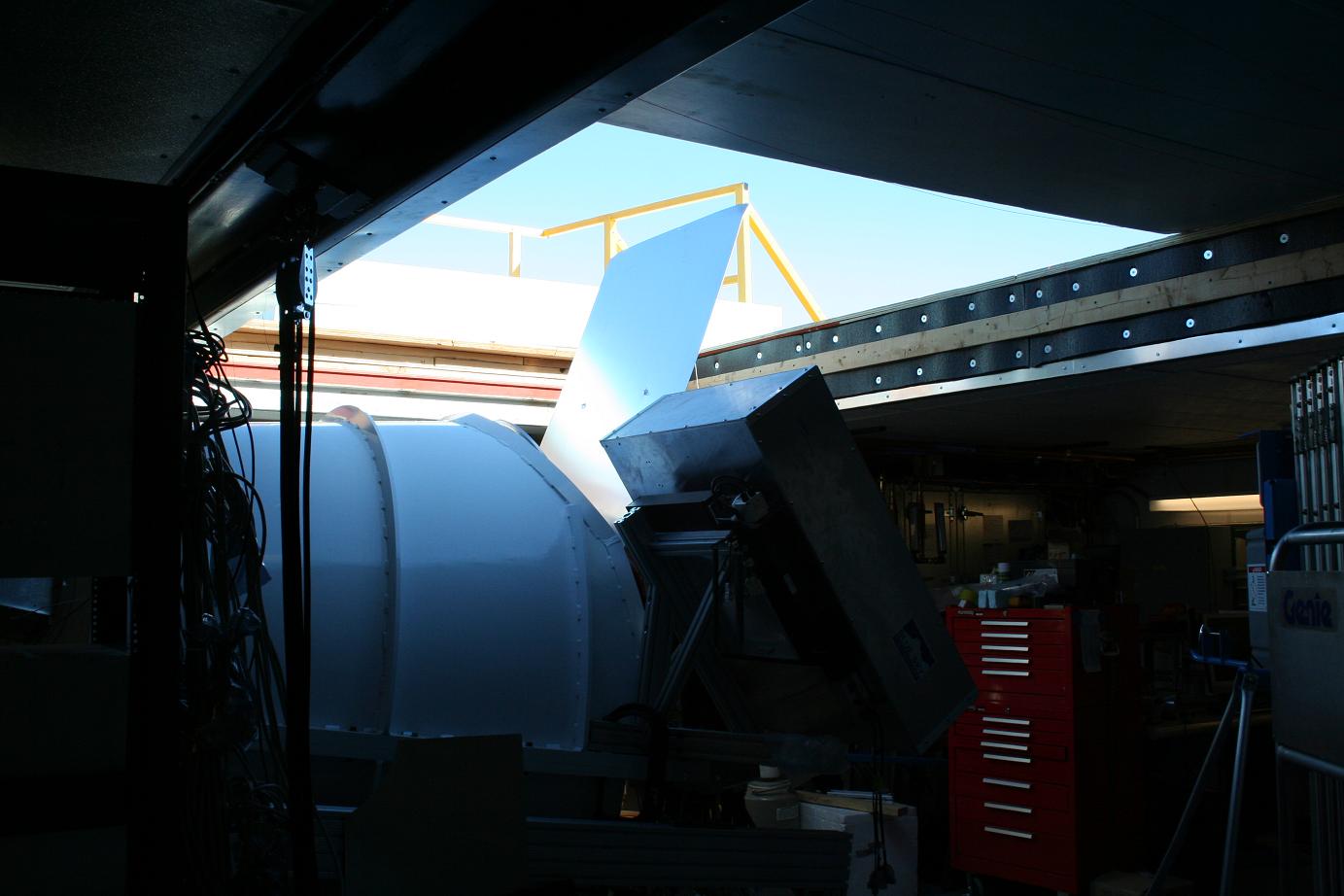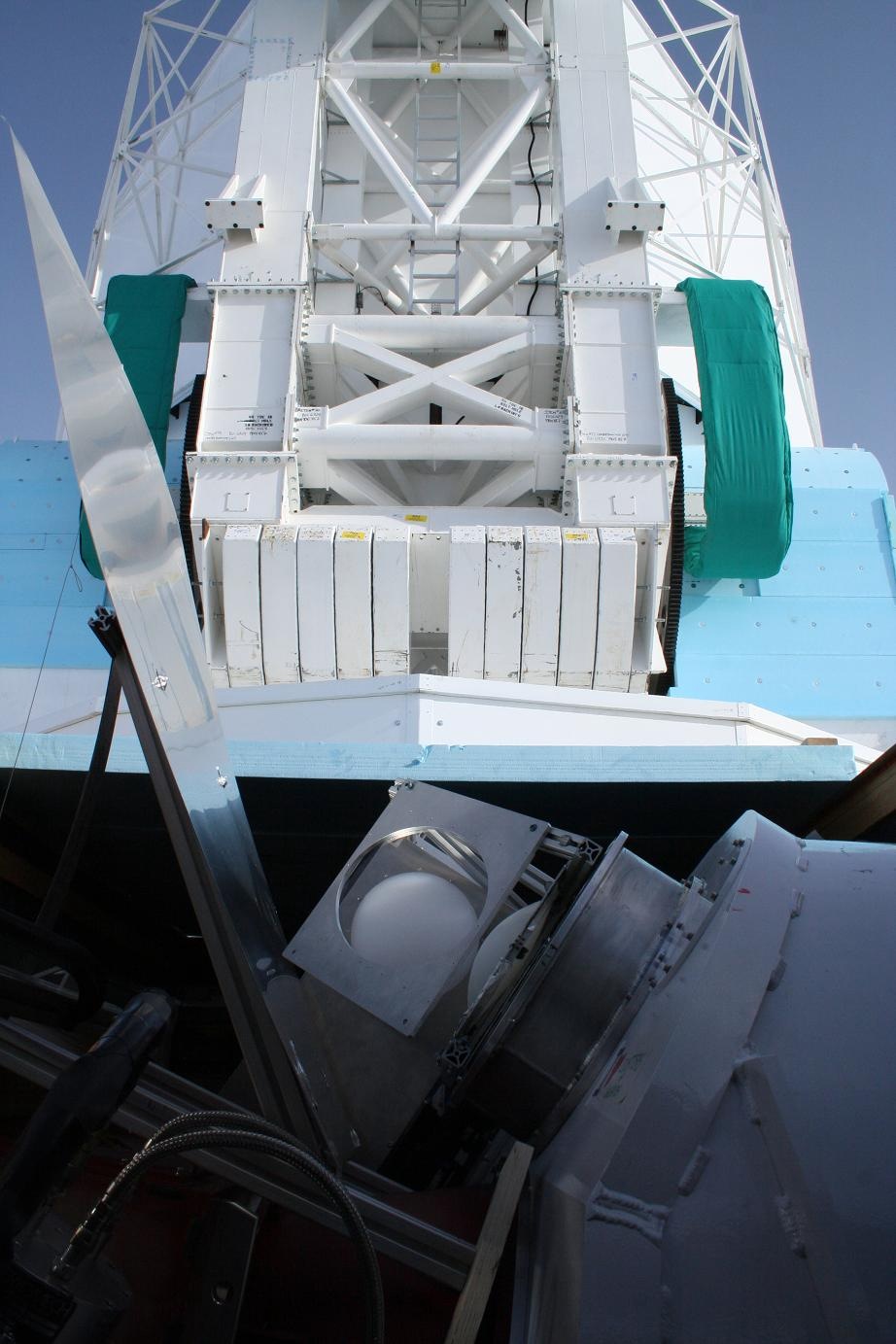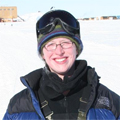Our New Sunroof
It’s been a busy couple of weeks out at the telescope. SPT postdoc Brad Benson and graduate students Martin Lueker and Joaquin Vieira installed a new set of detectors into the SPT “receiver,” which is essentially the camera for the telescope. A full array of detectors for our receiver consists of 1,000 individual pixels. Each pixel is an exquisitely sensitive device that registers tiny temperature changes when it absorbs electromagnetic radiation like that from the early universe. We record electrical signals that tell us essentially how much heat each detector has absorbed as we scan the telescope to point at different locations in the sky. For now, however, what we are interested in doing is testing the new detectors without installing them in the telescope itself, and just seeing how they work. These detectors are a major research project in themselves, and each batch incorporates new features as we learn more and more about their performance.
Because these new detectors are so sensitive, the radiation from any warm object in their field of view can overwhelm them–essentially they overheat. For the tests that we wanted to perform, we installed the receiver on the optics cryostat, which holds the 1-meter secondary mirror for the telescope, and usually lives up in the big boom below the dish. We needed a way to point the window in the optics cryostat out at the sky without mounting it back up into the telescope. So, what we’ve been doing is opening up the sliding roof above the control room and using a big metal plate to bounce light from the sky into the optics cryostat, and eventually to the detectors. The sky is the coldest thing around, and it’s also what the detectors are designed to see.

Our sunroof. The big white vessel is the cryostat that holds our secondary mirror at a low enough temperature (around ten degrees above absolute zero) that its own radiation doesn’t swamp our detectors. In this picture you can’t see the red receiver cryostat bolted to it on the other side–that’s what holds the detectors. The large silver box is the FTS, which I’ve described before. The big metal plate is what’s making sure that our detectors are mostly looking at the sky.
However, this has made for interesting working conditions in the lab. It’s nice to get the natural light in there, but with the ceiling open to the South Pole environment, it’s been freezing! For the last week I’ve been working in the control room at my laptop, controlling some of the tests and looking at data. I always have enough clothes on that I don’t feel cold, but I really notice how much harder it is to type. The fingers just don’t want to move quickly. At times, the wind was even blowing snow through the roof, and it was bizarre to have a bluster of ice flakes swirling around in the room.
We just finished two days of taking FTS measurements to characterize the response of the updated receiver to light of different frequencies. In the picture below you can see what it looked like from the other side of the setup.

It’s been a busy but successful couple of weeks, and we’re about ready to close up the sunroof and move on to the next projects for the season. It’s never dull around here!

 No comments
No comments 







